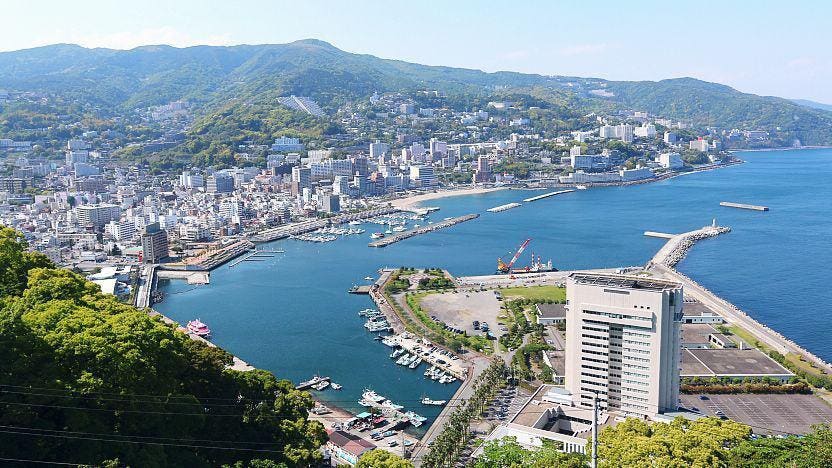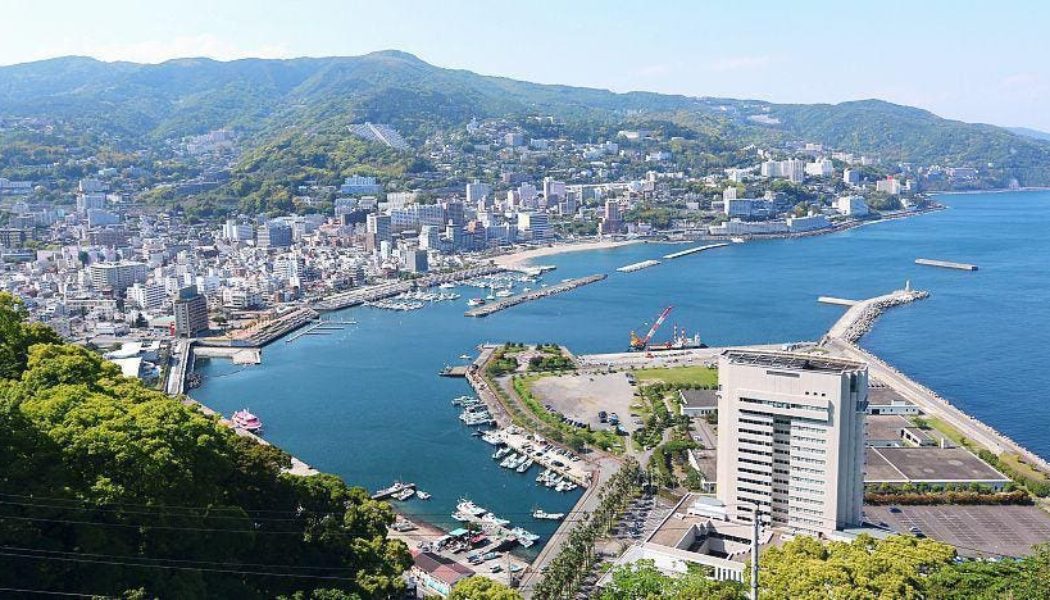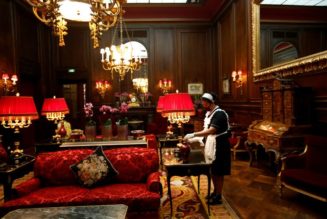
An hour and a half south by train from Tokyo Station, the town of Atami on the eastern coast of Japan’s Izu Peninsula, is known for its natural hot springs and scenic panoramas of the Pacific Ocean. But most international visitors tend to travel instead to more popular towns like Hakone, with its open-air museum and views to Mt. Fuji, or to Kamakura, with its beaches and historic 12th century shrines and temples.
Atami may be a bit off-the-tourist path but it definitely has its charms for Tokyo day trippers. With hot springs and stunning coastal views, it feels like an escape from big city life, but there’s culture, too. MOA Museum of Art has an impressive collection of Japanese and East Asian art, particularly its paintings and calligraphy. Kiunkaku is a 1919 former private villa preserved by the city of Atami as a time-traveling historic residence that features tiled Roman-style baths illuminated by stained glass.
The rooftop gardens in the private villa at The Hiramatsu Hotels & Resorts Atami
Relaxation is Atami’s biggest draw. In the 1990s, it was a getaway for Tokyo business teams on holiday. Today, it’s more of a seaside destination for families and retirees. On the luxury end, The Hiramatsu Hotels & Resorts Atami is your best option for a one- or two-night stay. High up on an isolated bluff over the Pacific, the property that is part of The Ryokan Collection, combines a modern edge with traditional elements, all with the style and elegance of a French auberge. The hotel group founder, Hiroyuki Hiramatsu, is a chef with a longstanding passion for French food, and he developed the Atami property as a dining destination in the manner of French country inns.
The hotel has 13 rooms, each with a private hot-spring bath, and is built in the sukiya-zukuri style of Japanese architecture. Though many of the rooms are modern, the rooftop Japanese Suite, called “Matsu-no-ma,” is designed like a traditional private residence, with shoji screens separating rooms and tatami reed mats lining the floors. Outdoor private gardens with Japanese black pine trees and an infinity pool overlook the peninsula’s coastline.
Inside the traditional villa atop The Hiramatsu Hotel & Resorts Atami
Throughout the hotel, art by Joan Miro and Japanese landscape painter Tamako Kataoka, add a level of eclectic sophistication. But it’s the food that most overnight guests talk about. Mr. Hiramatsu himself developed a menu concept that mixes flavors from Japan with French culinary techniques, and dinner is served with a formal touch: white table linens, tall candles flickering as centerpieces, and elegant wine service that draws from an outstanding cellar. Service is very attentive.
Look again: Atami Castle isn’t ancient, even though it looks like it is. The concrete throwback was … [+]
The Atami region itself has a rich and interesting history. It has been a popular destination for hot spring enthusiasts since ancient times—officially there are seven natural hot springs in town—and was a favorite retreat of the Japanese Imperial family during the Edo period. Today, Atami has a solid art scene, some good and inexpensive local restaurants and stunning views around every corner. One curious attraction is Atami Castle. It looks like an ancient stronghold but it was, in fact, built in 1959 when the city was being marketed as a resort. There’s something trippy about a concrete castle from the Fifties with hidden rooms and samurai weaponry, but it somehow adds to the lost-in-time feel that makes this sleepy seaside town worthy of a visit.









